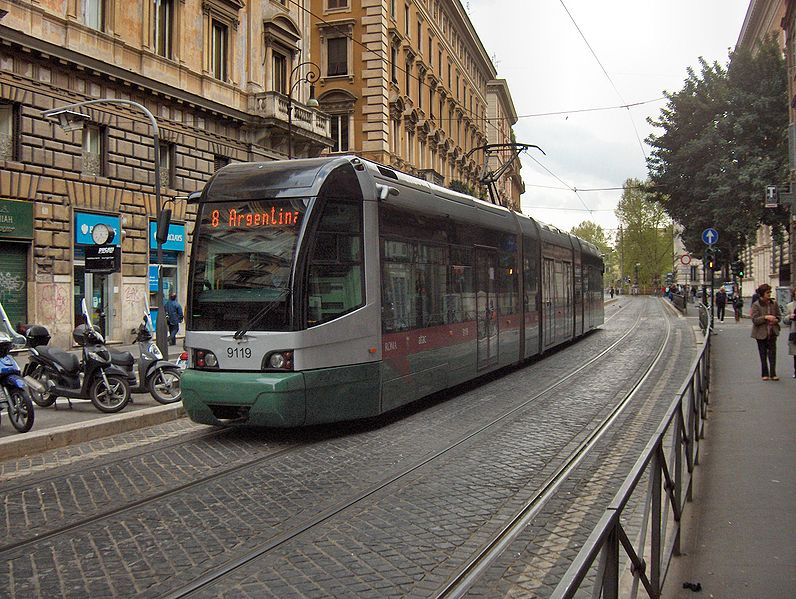
Not every day of the program is spent in the classroom; you will have opportunity to explore the city in your own time. Rome is a city that is definitely best seen on foot, however it is very well catered for when it comes to public transport.
Rome’s public transport is operated by ATAC (Azienda Tramvie e Autobus del Comue di Roma) who operate scores of buses and trams and cover most parts of the city. You can download a map of the public transport routes here.
Tickets
Before you begin your journey, you will need to purchase a ticket. Tickets can be purchased from tobacconists, bars, or vending machines at metro stations and major bus stops.
For travel within the city, we recommend that all students purchase a monthly public transit pass. These cost €35 and can be used on all buses, subways and other city trains.
The pass works basically the same way as the daily or weekly pass and is valid for one calendar month. Monthly passes can be purchased at the start of each month at metro or train stations. This is a much more cost-effective option for travelling around since Metro and Bus fares are €1.50 per trip without a monthly pass.
Ticket validating machines can be found on board all buses and trams and signal use tickets need to be inserted into the machine on boarding. Monthly passes must be validated on first use. Please ensure you validate your ticket when on the bus or Metro. Ticket Inspectors regularly patrol and if you travel without a validated ticket there is an on-the-spot €50 fine for a non-EU citizen
Buses and Trams
- The major bus terminus/station in central Rome is Termini Station. It is a major transport hub and will become a very familiar place over the course of your stay.
- Buses operate from 5.30am – Midnight, however there are a few night buses on key routes – this is indicated by an N before the number.
- With the exception of a couple of smaller electric minibuses, buses do not enter the centre’s narrow streets however most signs and locations are a short walk away from a station or stop.
- The bus service is a well used one and it can be very crowded. Queues at stops are not orderly and so getting on can be an undignified scramble – especially at peak times and do not expect to get a seat (at any time).
- Most major stops have electronic displays that show the estimated time of arrival of the next bus/tram.
Key bus routes include:
- 40 (Limited stop express) – Termini – Piazza Venezia – Argentina – Piazza Pia (for St Peter’s/Vatican)
- 64 – Termini – Piazza Venezia – Argentina – Vatican
- 62 – Repubblica – Spanish Steps – Piazza Venezia – Argentina – Vatican
- 81 – Vatican Museums – Piazza Imperatore (Spanish Steps) – Piazza Colonna (Trevi Fountain) – Piazza Venezia – Circo Massimo – Colosseum
Metro (Subway/Tube/Underground)
- The Metropolitana or Metro as it is more commonly known, has three lines named A, B and (suprisingly enough) C.
- Line A is the Red Route and leads from Battistini in the west to Anagnina in the southeast.
- Line B is the Blue Route and leads from Rebibba in the northeast to EUR in the southwest.
- Line C (Green) is still under construction however part of the route opened in November 2014.
- Stations are clearly marked with the Metro logo – a white M on a red background.
- Line run from 5.30am – 11.30pm daily (and until 1.30am on friday and Saturday)
- Trains run approximately every 4-10 minutes
Trains
Italy’s train system is a great way to get around if you are going out of town as there is a good network of inter-city and regional, plus urban services. Italy’s national train service is operated by Trenitalia. Tickets can be purchased at the ticket office or at an automated ticket machine or can be purchases in advance on the Trenitalia website.
Taxi
Taxi’s are an expensive way to see the city and so unless you have a load of luggage we suggest avoiding them where possible. If you are going to use a taxi then always use a licensed car. Rome’s official taxis are white and have Comune di Roma printed on the side and a TAXI sign on the roof.
- Always hail a taxi from a specially marked taxi rank or stand (near any tourist sight). Many will stop on the street but they are not supposed to.
- Taxi driver charge a supplement for baggage – the more you carry, the more it costs.
- Costs also increase on Sundays, public holidays and at night.
- Make sure the meter is on and visible before you start your journey.
- You don’t need to tip – just round up to the nearest Euro.
Walking
Ultimately walking is the best way to see Rome. Not only is it free (of course) but there are a myriad of discoveries to be made, glimpses to savour and moments to cherish when wandering the street the cobbled streets. Who knows what’s around the next corner..?